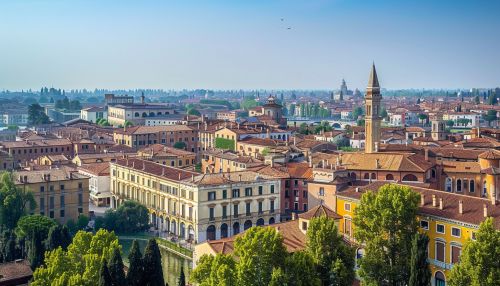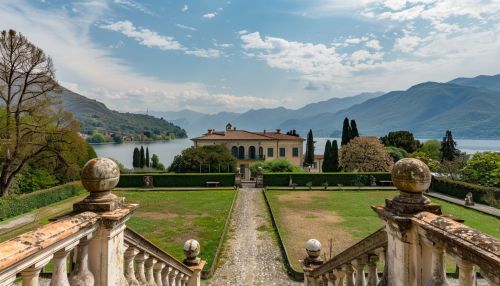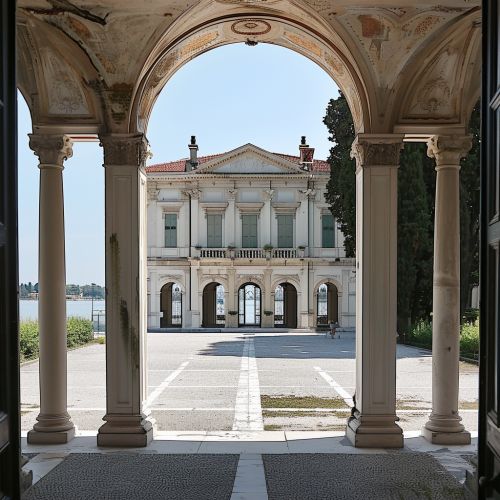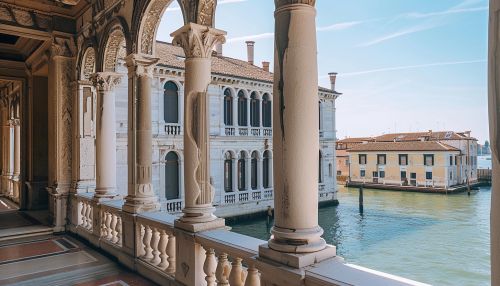Andrea Palladio
Early Life and Education
Andrea Palladio was born on November 30, 1508, in Padua, a city in the Venetian Republic. His birth name was Andrea di Pietro della Gondola. His father, Pietro, was a miller by profession. Not much is known about his early life, but it is believed that he was apprenticed to a stonecutter in Padua in his early years, before moving to Vicenza to join a guild of stonemasons and bricklayers.


In Vicenza, Palladio was introduced to the humanist scholar, poet, and translator, Gian Giorgio Trissino. Trissino recognized Palladio's talent and took him under his wing, providing him with a comprehensive education in the classics, literature, and the arts. It was Trissino who gave him the name 'Palladio', inspired by the Greek goddess of wisdom, Pallas Athene.
Career and Works
Palladio began his career as a stonemason, but under Trissino's guidance, he developed an interest in architecture. Trissino introduced Palladio to the works of ancient Roman architect Vitruvius, whose writings had a profound influence on Palladio's architectural style.
Palladio's first known architectural project was the reconstruction of the Villa Trissino in 1540. His design incorporated elements of ancient Roman architecture, which became a defining feature of his works. He went on to design numerous villas, palaces, and churches in the Venetian Republic, many of which are considered masterpieces of Renaissance architecture.


One of Palladio's most notable works is the Basilica Palladiana in Vicenza. Originally a Gothic-style building, Palladio redesigned the structure with a new façade featuring large arches and small rectangular windows, a style that came to be known as Palladian architecture.
Palladio also designed the Teatro Olimpico in Vicenza, which is considered one of the first modern theaters. The theater features a trompe-l'oeil stage, designed to give the illusion of streets receding into the distance.
In addition to his architectural works, Palladio wrote several treatises on architecture. His most famous work, "I Quattro Libri dell'Architettura" (The Four Books on Architecture), was published in 1570. The book is a comprehensive guide to architecture, covering everything from building materials and construction methods to architectural principles and design.
Legacy
Palladio's architectural style, known as Palladianism, had a significant impact on architectural design worldwide. His works inspired numerous architects, including Inigo Jones in England and Thomas Jefferson in the United States. Palladian architecture is characterized by its symmetry, perspective, and values drawn from the formal classical temple architecture of the Ancient Greeks and Romans.


Palladio's influence can be seen in many notable buildings, including the White House in Washington D.C., and the Chiswick House in London. His architectural principles continue to be studied and applied in modern architecture.
In 1994, UNESCO designated the city of Vicenza and the Palladian Villas of the Veneto as a World Heritage Site, recognizing the lasting impact of Palladio's architectural style.
Death
Andrea Palladio died on August 19, 1580, in Maser, Veneto. His death marked the end of an era, but his architectural principles and designs continue to influence architects and builders worldwide.
